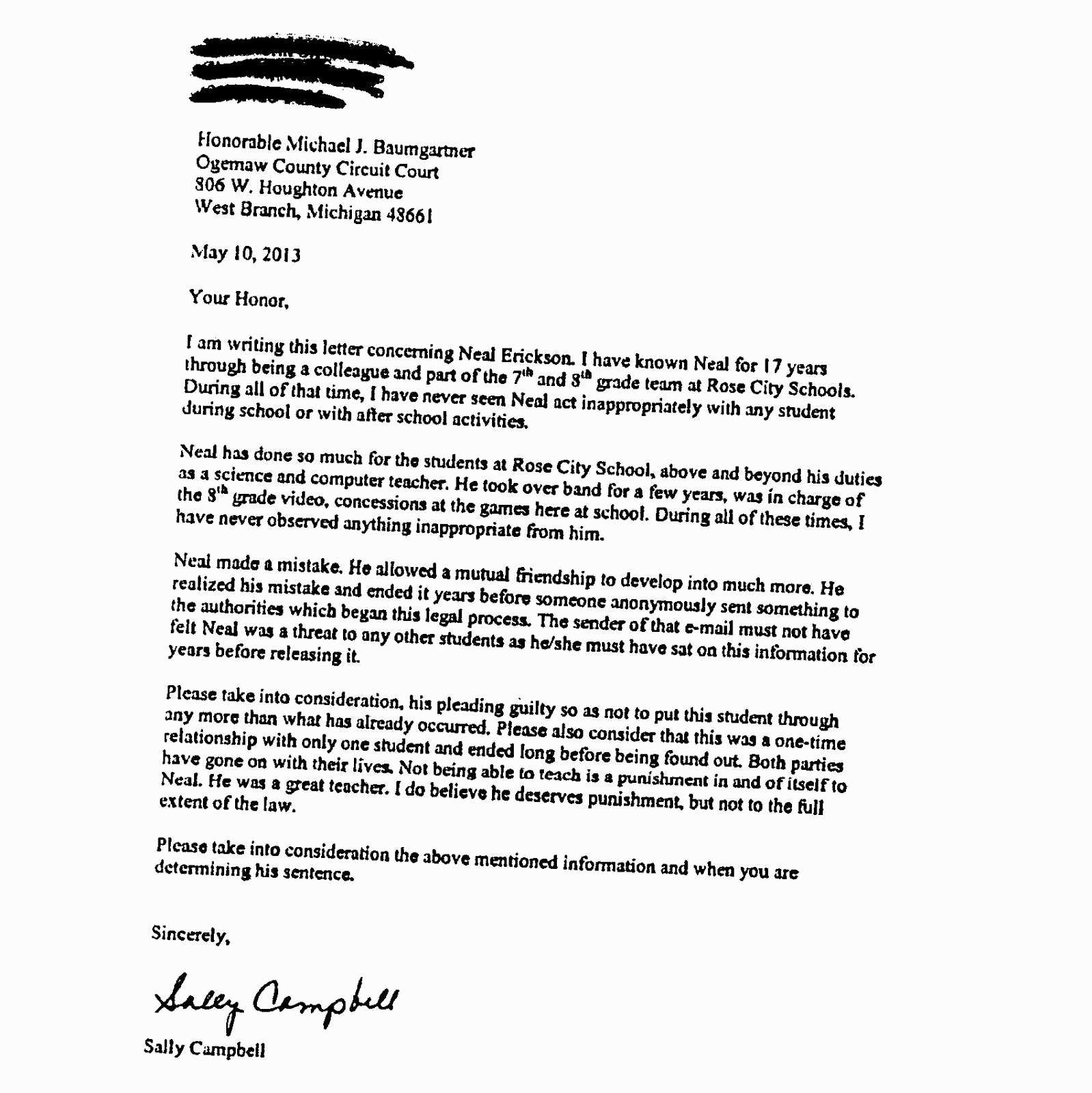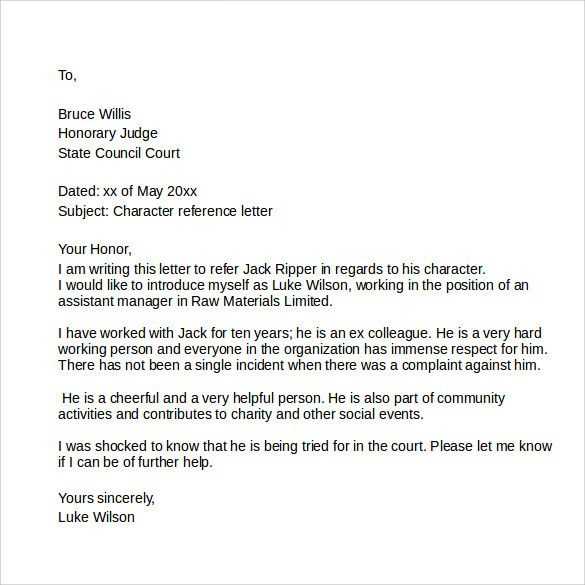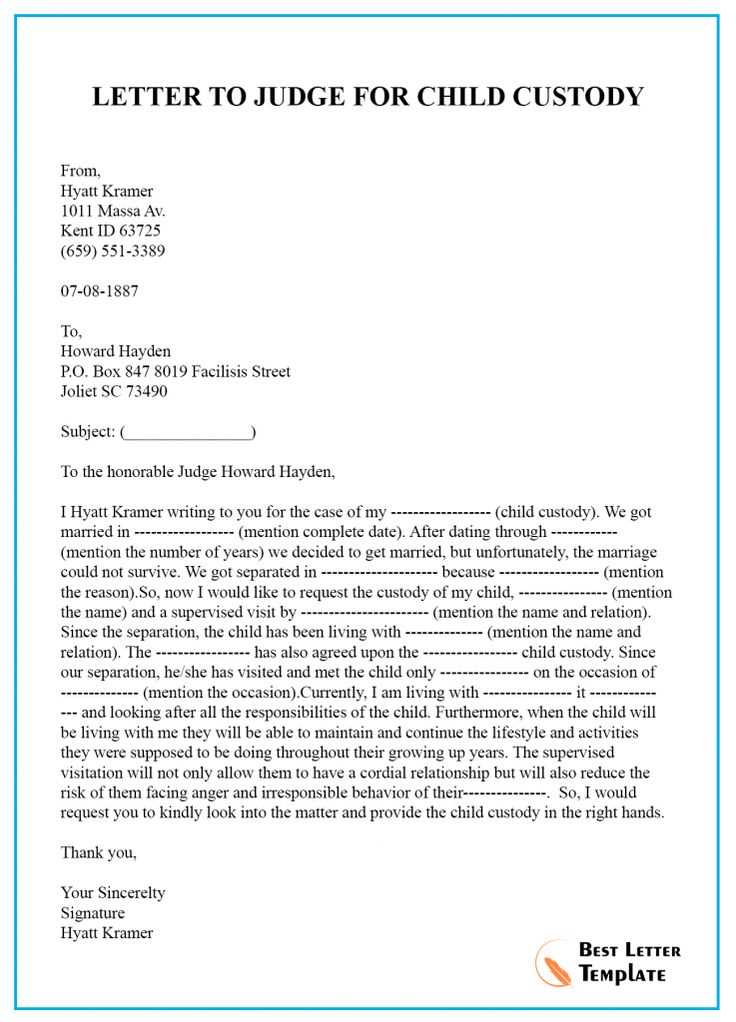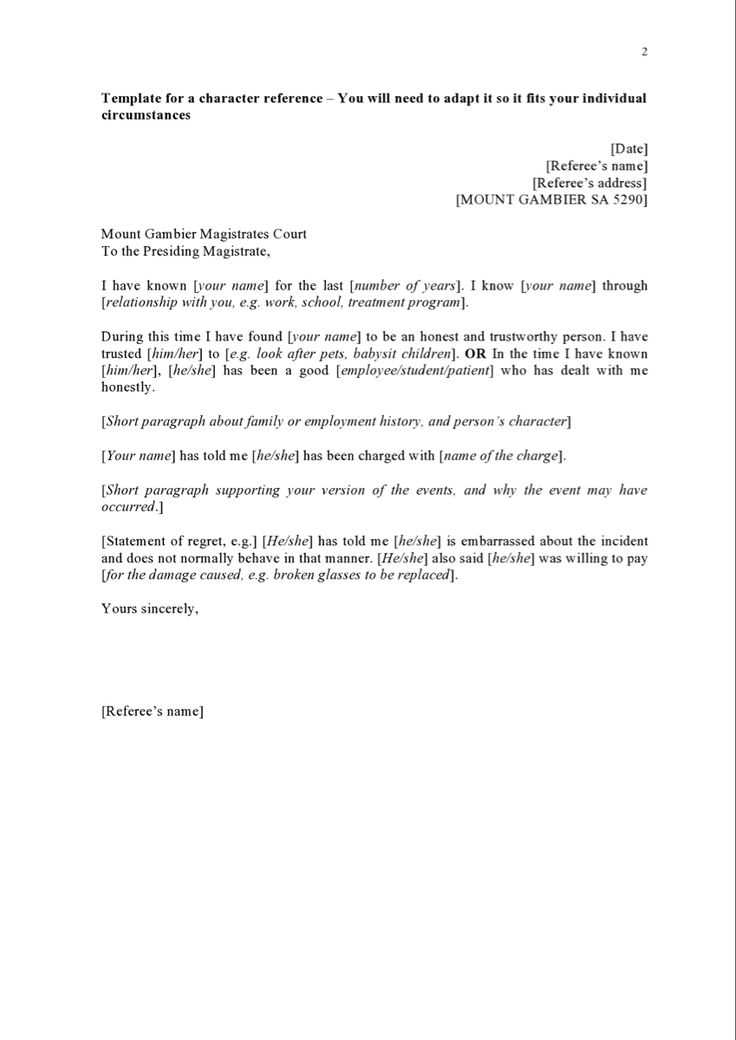Sentencing Letter to Judge Template Guide

When involved in a legal matter, it is important to communicate effectively with the court. One of the ways to express your thoughts is by crafting a formal document that presents your case in a respectful manner. Such documents are essential for influencing decisions, and understanding the right structure and tone is crucial for their success.
Understanding the key elements of a formal appeal is essential for creating a document that can positively impact the outcome. The structure of such communications often follows a specific pattern that emphasizes clarity, respect, and adherence to legal norms.
By using the correct format, you ensure that your submission is not only taken seriously but also stands a better chance of being considered. It is important to avoid common pitfalls and be mindful of the language used, as this can significantly affect the reception of your appeal.
Understanding the Purpose of a Court Appeal Document
In legal proceedings, written submissions play a critical role in conveying a person’s perspective or explaining mitigating circumstances. Such documents serve as a means of communication with the court, allowing individuals to share their thoughts, emotions, and plea for leniency or understanding.
Why These Documents Matter
These communications can significantly influence the final decision in a case. Whether seeking a reduced sentence or providing additional context, their importance cannot be overstated. A well-crafted document can serve as a persuasive tool in demonstrating the individual’s remorse, personal circumstances, or contributions to society.
Key Objectives of the Document
- Expressing remorse: A critical component of these submissions is showing sincere regret for actions taken.
- Providing context: Explaining factors that may not have been fully considered during the legal process.
- Seeking understanding: The goal is often to encourage the court to consider more lenient outcomes based on personal growth or circumstances.
Key Components of an Effective Court Submission
For any formal appeal or written communication to the court, the structure and content are essential to ensure it is taken seriously. An effective submission includes several crucial elements that together form a coherent and compelling argument. These components help convey respect, clarity, and sincerity, making a positive impression on those reviewing the document.
Clear Introduction
A well-defined introduction sets the tone of the communication. It should briefly introduce the purpose of the document and establish its intent, whether it’s to request leniency, explain circumstances, or express remorse.
Personal Statement
Including a personal statement is key. This section allows the individual to speak directly to the court, expressing their feelings, acknowledging their mistakes, and showing accountability for their actions. The emotional aspect here is important for humanizing the situation.
Supporting Facts and Context
To make the submission more persuasive, providing relevant facts and context is essential. This could involve personal history, family situations, or any mitigating factors that might influence the decision-making process. Providing this information helps the court understand the bigger picture.
Formal Tone and Language
Maintaining a formal, respectful tone throughout is crucial. The choice of words should reflect sincerity and professionalism, avoiding overly casual or emotional language. An objective, respectful tone increases the credibility of the submission.
How to Address a Judge Properly

Properly addressing the court is essential for ensuring that your communication is taken seriously and shows respect. The way you refer to the judge or the legal authority plays a critical role in establishing the formality of your submission and the tone of the overall document.
Using the correct titles and phrases helps maintain the respect necessary for legal proceedings. It is important to be aware of the specific guidelines for addressing the court, as this can vary depending on the region or jurisdiction.
| Title | Usage |
|---|---|
| Honorable | This is the most common and respectful form of address. It should be used when referring to the judge in the opening salutation or within the text. |
| Your Honor | Typically used when directly addressing the judge. It is a polite and formal way to refer to the authority in court. |
| Sir/Madam | In some cases, this can be used when you are unsure of the judge’s title or in less formal proceedings. |
Tips for Writing a Respectful Tone
Maintaining a respectful tone is crucial when addressing any formal body or authority, especially in a legal context. The way you express yourself can influence how your communication is received, and ensuring a polite, respectful tone helps establish credibility and seriousness. The right approach can make your submission more persuasive and positively impact the decision-making process.
Key Elements to Ensure Respectful Tone
- Avoiding Aggressive Language: Choose words that express your point without sounding confrontational or overly emotional.
- Using Formal Phrasing: Phrases such as “I respectfully request” or “I kindly ask” convey politeness and professionalism.
- Staying Objective: Present your argument in a neutral, fact-based manner rather than focusing on personal opinions or feelings.
Common Pitfalls to Avoid

- Overuse of Apologies: While it’s important to show remorse, excessive apologizing can undermine the tone and appear insincere.
- Overly Casual Language: Avoid slang or informal expressions that might be interpreted as disrespectful.
- Demanding Language: Refrain from using commands or a tone that might come across as demanding or entitled.
Common Mistakes to Avoid in Letters

When submitting any formal communication to the court or legal authority, certain errors can detract from the impact and effectiveness of your message. Avoiding common pitfalls can help ensure that your message is clear, respectful, and taken seriously. Understanding these mistakes can also prevent any negative consequences that could arise from poorly presented arguments.
Frequent Mistakes to Watch Out For
- Lack of Structure: A disorganized or poorly structured submission can confuse the reader. Always ensure your content flows logically and is easy to follow.
- Inappropriate Tone: An overly casual or harsh tone can undermine your message. It’s crucial to maintain a formal, respectful approach throughout.
- Overloading with Unnecessary Information: Including too much irrelevant detail can distract from your main points. Stick to the key facts and relevant circumstances.
How to Improve Your Submission

- Proofreading: Carefully reviewing your communication for errors and clarity can prevent misunderstandings or mistakes.
- Being Concise: Focus on expressing your main points clearly and succinctly, without unnecessary repetition.
Examples of Court Communication Formats
When crafting a formal communication for a legal authority, having a structured and appropriate format can help ensure your message is conveyed effectively. These examples demonstrate how to organize and present your thoughts in a clear, respectful manner while adhering to common practices for such formal submissions. By following these guidelines, you can present your message with the professionalism needed in legal contexts.
Example 1: Request for Leniency
Dear Honorable Court,
I respectfully submit this appeal to request your consideration for a more lenient decision regarding my case. I understand the seriousness of my actions, and I deeply regret the circumstances that led to this situation. I have taken full responsibility for my behavior and am committed to making amends. I kindly ask for your understanding and hope that you will consider the efforts I have made to change.
Example 2: Explanation of Circumstances
Dear Your Honor,
I am writing to provide additional context and details regarding the circumstances surrounding my actions. I acknowledge the mistakes I made and the impact they have caused. However, I believe that the situation was influenced by factors beyond my immediate control. I respectfully ask that you take these elements into account when making your final determination.